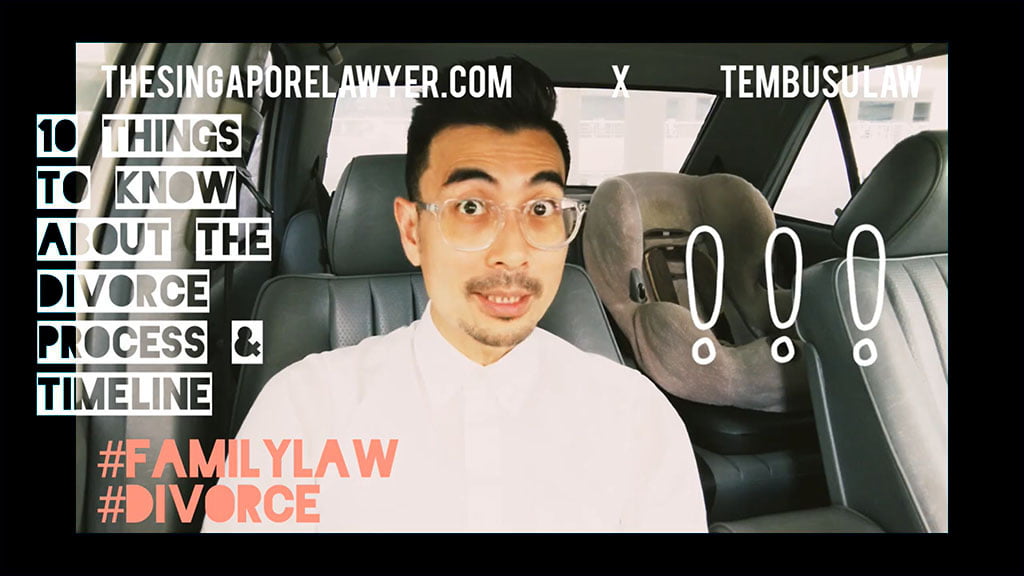In terms of the process and timeline of a Divorce, here is a typical example of how a Divorce can proceed:
- To start the Divorce process and apply for a Divorce to dissolve the marriage, you must file and serve (deliver) the Writ of Summons and Statement of Claim on your spouse. Your spouse must decide within 8 days if he is going to challenge or contest the Divorce (based on the terms you have stated in your Divorce application papers).
- If your spouse decides to contest the Divorce, he must file 2 documents in Court – the Memorandum of Appearance and the Defence. The Memorandum of Appearance is meant to acknowledge that he will be participating in the Divorce and Court process and the Defence is to meant to summarise your spouse’s key responses to the claims you have stated in your Divorce application and Statement of Claim.
- Quite often, you and your spouse will and should discuss and communicate with each other to try to reach an amicable settlement before allowing the Divorce to go towards a heavily contested and bitterly fought dispute and trial. There will be opportunities to do this through the Resolution Conference conducted and facilitated by a Family Resolutions Judge and also through Counselling Sessions conducted and facilitated by a Court Counsellor.
- If cannot settle your differences and reach a compromise or settlement, the Divorce case will move towards a Trial where a Trial Judge in Court will assess evidence presented by you and your spouse in support of the respective claims made by you, for example your claim that the marriage has irretrievably broken down and your spouse’s denial of this.
- If your spouse chooses not to challenge or contest your Divorce application and only intends to challenge or contest the Ancillary Matters, your spouse must file the Memorandum of Appearance to point out the Ancillary Matters he intends to challenge without filing a Defence.
- If the Court confirms and agrees that there is enough evidence to show that the Marriage has irretrievably broken down, the Court will grant an Interim Judgment which is a Court Order that dissolves the marriage and the case then moves into the next stage for the Court to decide on how to handle the Ancillary Matters.
- To help the Judge and Court properly assess the case and decide on how to handle the Ancillary Matters in a fair way, you and your spouse must file your Affidavits of Assets and Means. These are sworn statements in which you and your spouse must clearly state and detail all important information relating to your respective assets and financial responsibilities such as your salary and sources of income and your expenses. You will have an opportunity to respond to and reply to the claims made by your spouse in their Affidavits by giving your own clarification and explanation in reply Affidavits. If you need to get important information from your spouse relating to their assets and financial responsibilities in order to prepare your own Affidavit, then you may be able to apply for the Court’s help (through a process known as Discovery) to order that your spouse share and disclose the requested information with you.
- If the total net value of the matrimonial asset(s) that you and your spouse are dealing with is more than $5 million, then your Divorce case will be moved to be handled in the High Court.
- After the filing and exchange of the Court papers and Affidavits, the Court will schedule the case to be heard on a particular date and Court session to handle the presentation of the arguments and evidence for the Ancillary Matters.
- After the Court has assessed the evidence and arrived at a final decision on the issues in the Ancillary Matters, you and your spouse must wait for 3 months (from the earlier date that the Court granted the Interim Judgment) before you can apply for a Final Judgment which formalises and converts the terms earlier stated in the Interim Judgment.
So, there you have it, some basic information on: 10 things to know about the Divorce process and timeline. If you need a Divorce lawyer in Singapore, I’m offering a free 30-minute consultation to help you figure out if I’m the right fit for your case. Learn more about what’s involved in Divorce consultation fees.

